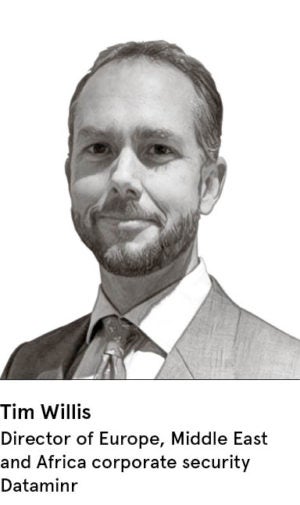 As advances in technology continue to increase the amount of data in the world and companies send more people to conduct business in remote locations, there is a growing expectation for organisations to gain information faster about incidents and threats that could impact them.
As advances in technology continue to increase the amount of data in the world and companies send more people to conduct business in remote locations, there is a growing expectation for organisations to gain information faster about incidents and threats that could impact them.
The “golden hour” refers to the critical time to respond to an incident. Naturally, the sooner a business is aware of a problem, the sooner it can start acting to reduce any potential negative impact. Similarly, as soon as a business becomes aware of evolving and emerging threats, it can monitor them more effectively and, if appropriate, implement measures to mitigate and reduce their impact.
By relying on traditional sources of information, such as the news media and some information providers in the security space, there is typically at least 30 minutes between the incident occurring and news reaching a company’s security and risk teams. Sometimes that can stretch to a couple of hours or longer before the business becomes aware.
The rise of social media, however, has transformed incident response. Around half a billion posts are transmitted every day on Twitter, which has become a rich source of insights when it comes to crisis response or dealing with potential threats to business.
“Social media has been a big game-changer because suddenly you have billions of people able to instantly transmit information to the world on a smartphone. This is something that ten years ago just didn’t even exist,” says Tim Willis, director of Europe, Middle East and Africa corporate security at Dataminr, which discovers critical breaking information for clients before it’s in the news.
Dataminr uses artificial intelligence and machine-learning techniques developed over the last eight years to discover relevant signals from publicly available social media. This is important because when an incident happens, people aren’t necessarily tweeting fully formed, coherent alerts. Instead, there is typically a large cluster of posts asking what’s happening in a certain area or reporting people running away from something.
“It’s like setting tripwires around areas of interest to organisations and, when that wire is tripped, it allows you to turn your focus on that and start to dive deeper into what’s going on there,” Mr Willis says. Discovering relevant content and providing almost instant access to images and videos from the ground is hugely valuable to corporate security and risk teams tasked with understanding the location, scale and implications of a breaking incident. The more content they can get from eye witnesses, the easier that is.
Following the attempted coup in Turkey in 2016, for example, Dataminr’s technology alerted its clients significantly ahead of the mainstream news channels and other information providers. This allowed a pharmaceutical company to not only immediately safeguard its people affected in the local area, but also to halt plans to transport pharmaceuticals with the knowledge that the refrigerated units in their vehicles would fail while stuck in traffic, risking millions of dollars’ worth of product.
“Social media has driven a massive evolution in the way we can digest information, from relying on a limited number of trusted sources of information in a one-way form of communication, to people on the ground telling each other about incidents and events,” Mr Willis adds. “A lot of the opportunity is about the speed of becoming aware of incidents, but that’s also coupled with the granularity you can achieve.
“If you’re using the right tools, you can be proactively alerted to company-specific threats and areas you are interested in, rather than the traditional way of going to a security information provider, who might be very good at helping you with analysis, but will only ever be able to tell you what they think you need to know. By going direct to social media, you can focus on what you know you need. It puts you on the front foot from an organisational resilience perspective.”
Organisations must find an automated way to filter through the noise to discover the relevant signals for their business and then dissect quickly
The biggest challenge to utilising social media as an early indicator is in the sheer volume of information that is transmitted through the channel. Clearly, manually scanning 500 million tweets each day in multiple languages and looking for the right keywords and clusters of activity to indicate an event type is taking place is not sustainable. Organisations must find an automated way to filter through the noise to discover the relevant signals for their business and then dissect quickly.
To aid this process, Dataminr’s technology is powered by machine-learning technology. “When you look at the volume of data we’re processing, you have to have machine-learning as part of the process and the right algorithms involved to make sense of that information and find the right bits of information to filter out the noise. Only then can you get relevant content delivered to your security and risk teams.”
Analysing social media in this way also poses opportunities beyond risk management. Maintaining your awareness of the wider business environment potentially enables you to achieve first-mover advantage.
“So it’s not just about managing risk,” Mr Willis concludes. “It’s also about identifying opportunities for businesses and the more effectively you use social media to do that, the more competitive you will be as a business.”
For more information please visit dataminr.com





